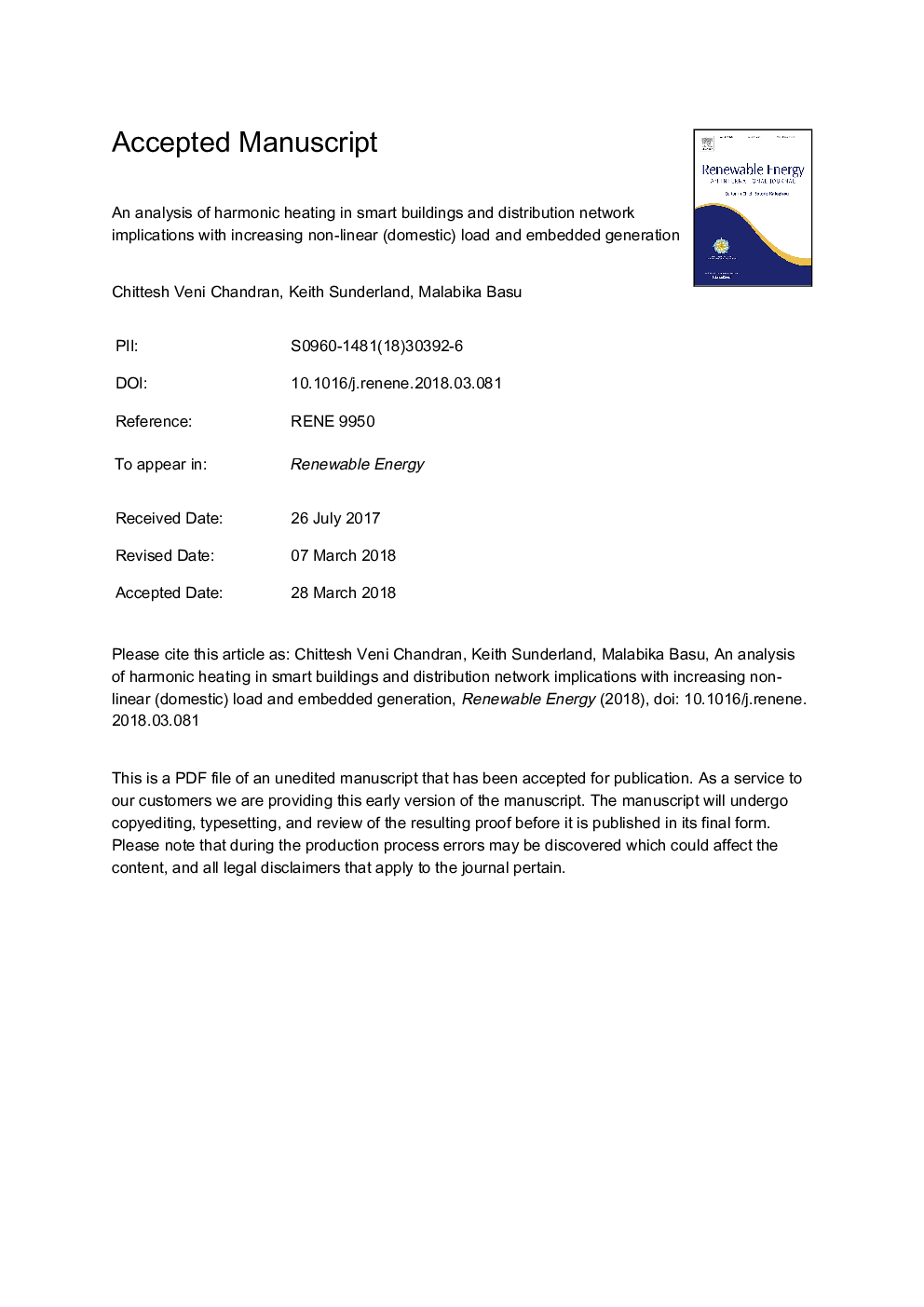| کد مقاله | کد نشریه | سال انتشار | مقاله انگلیسی | نسخه تمام متن |
|---|---|---|---|---|
| 6764274 | 1431578 | 2018 | 36 صفحه PDF | دانلود رایگان |
عنوان انگلیسی مقاله ISI
An analysis of harmonic heating in smart buildings and distribution network implications with increasing non-linear (domestic) load and embedded generation
ترجمه فارسی عنوان
تجزیه و تحلیل گرمایش هارمونیک در ساختمان های هوشمند و پیام های توزیع شبکه با افزایش بار غیر خطی (داخلی) و تولید انبوه
دانلود مقاله + سفارش ترجمه
دانلود مقاله ISI انگلیسی
رایگان برای ایرانیان
کلمات کلیدی
موضوعات مرتبط
مهندسی و علوم پایه
مهندسی انرژی
انرژی های تجدید پذیر، توسعه پایدار و محیط زیست
چکیده انگلیسی
Harmonic distortion is generally not taken into account within domestic installations and the associated wiring systems, as its potential is considered sufficiently small to be neglected. Standards to limit harmonic manifestations in the low voltage (LV) network are available, but these can be breached as a consequence of advancements in power electronics in some modern household devices contributing higher levels of harmonic distortion than permitted. While these devices individually might not be considered serious in terms of system level harmonic distortion manifestations, electrical equipment failures and insulation failures - increasingly being derived from harmonic cable heating - suggest a different story. A 10% increase in THD in a circuit will result in an increase of 10% in cable heat. Recently, attempts have been made to offer harmonic derating factors for building electrical circuit design in BS7671, but this approach currently prioritizes large power devices. This article explores the need for harmonic considerations during the design stage of electrical services engineering projects. Best practice suggestions, in the context of the dissemination of heat caused by harmonics related to household load deployments/configurations, are also provided based on the analysis conducted with real household data. This is further extended to a practical distribution network where the effect of harmonic heating at the network level is explored. The results suggest that the harmonics in the distribution network can amass to cause a cumulative effect on the network. Furthermore, it can be observed from the results that in a distribution network containing (domestic) solar photo voltaic (PV) systems, the harmonic heating issue can be reduced. This benefit is not without consequence however, as increasing PV penetration does not reduce the harmonic content of the overall system and therefore presents a further concern that may need to be addressed in due time.
ناشر
Database: Elsevier - ScienceDirect (ساینس دایرکت)
Journal: Renewable Energy - Volume 126, October 2018, Pages 524-536
Journal: Renewable Energy - Volume 126, October 2018, Pages 524-536
نویسندگان
Chittesh Veni Chandran, Keith Sunderland, Malabika Basu,
